The Google Nexus 9 Review
by Joshua Ho & Ryan Smith on February 4, 2015 8:00 AM EST- Posted in
- Tablets
- HTC
- Project Denver
- Android
- Mobile
- NVIDIA
- Nexus 9
- Lollipop
- Android 5.0
Display
For those that are uninitiated to the world of displays, a display seems relatively simple. After all, it just needs to have high resolution, pretty colors, high brightness, and high contrast. However, there’s a great deal of complexity to this issue. Even excluding the actual structure of a display, the characteristics of a display can strongly affect perception. Poor display calibration, low brightness, high reflectance, and low contrast can all affect the experience. In addition, something as simple as subpixel arrangement and the thin-film transistor design can have significant impacts on viewing angles and battery life.
In order to test these things, we use SpectraCal’s CalMAN 5 Ultimate and X-Rite’s i1pro2 spectrophotometer to ensure accuracy in our testing, in conjunction with subjective testing to get a good idea of overall display performance. As always, we target sRGB gamut and 2.2 gamma as these are the industry standard. While there are many arguments for larger gamuts and different gamma curves, the goal of our display calibration testing is to make sure that a display will be reasonably accurate in its reproduction of content as an artist intended. Without this calibration, videos, photos, and other content can appear "off".
While we still don’t have an accurate reflectance test, I spent a great deal of time wondering why the display on the Nexus 9 seemed to have more distracting glare than most. This was strange to me as the display was obviously laminated with no perceivable viewing angle degradation that comes with non-laminated displays. It seems that whatever material HTC has used to laminate the display isn’t quite ideal in this case, as at some point in the display stack there’s an obvious secondary reflection. This is an issue relating to a lower index of refraction, so it’s likely that some other characteristic was valued over reflectance.
Other than this, the only other immediately noticeable flaw is the display’s backlight bleed. To me, it’s quite obvious that the display gets lighter at the edges much like what I’ve seen on the Nexus 5. It seems that this is related to the backlight configuration, although given the high brightness of the panel I'm not sure that this can be avoided.
Before we get into the objective testing, I also wanted to mention that this display has “dual-domain pixels” similar to the iPad Air 2 and iPhone 6. The level of angling seems to be much more significant though, which seems to make the purple blacks much more obvious, but outside of this shift in black point it’s almost impossible to see shifts in color with changes in viewing angle. The microscope photo combined with some casual examination under sunlight suggests that the digitizer has been integrated into the display for improved clarity. The resolution is also quite high for a tablet, and while I can obviously pick out aliasing when closely examining the display, at a normal viewing distance I don’t really see any of these problems.
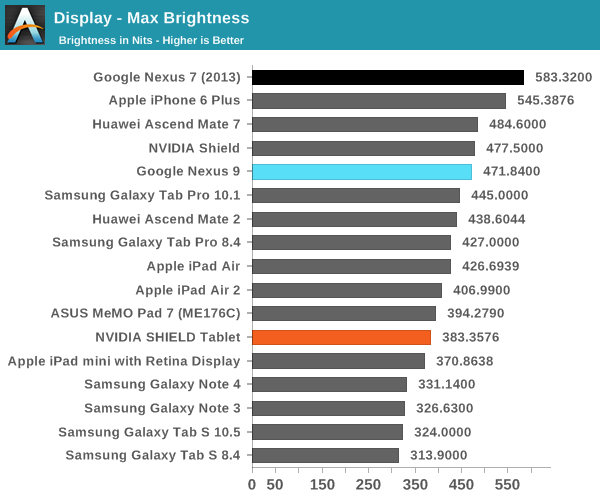
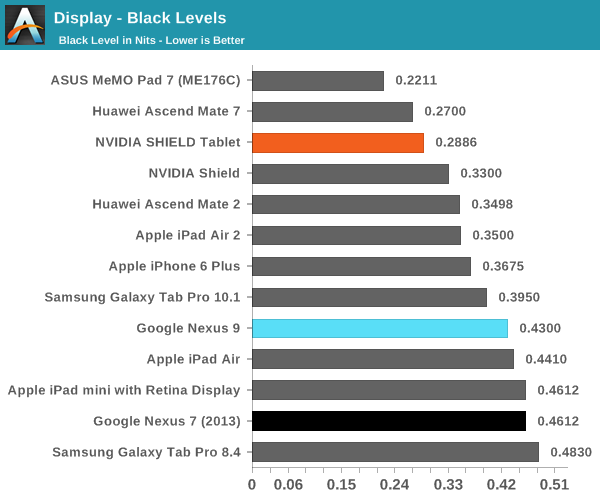
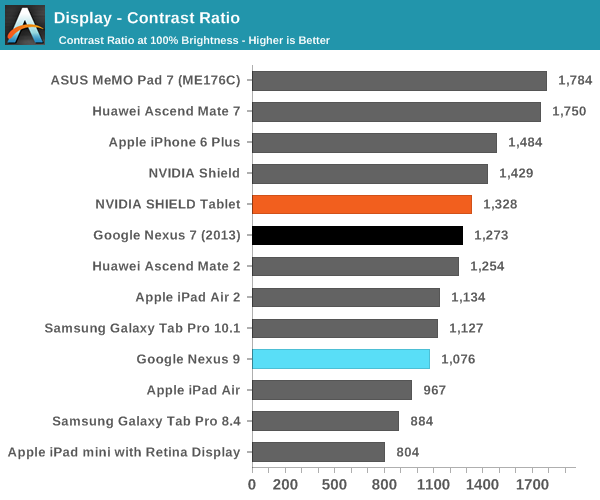
The brightness of the Nexus 9's display ends up higher than what we see with the iPad Air 2. Contrast is approximately equal to what we see in the iPad Air 2, which is good but definitely not the perfect inky blacks that one might be used to from AMOLED.
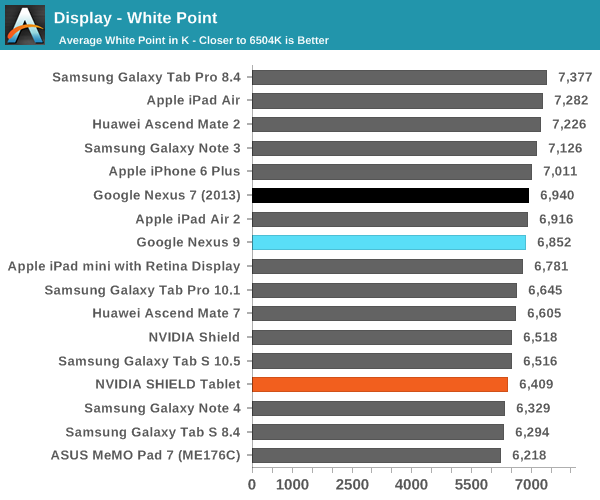
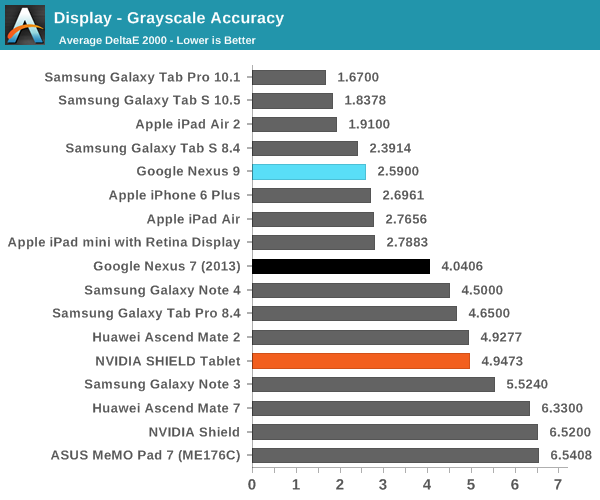
The next aspect of our display test suite is the grayscale test, which looks at the color balance and brightness of various shades of grayscale from black to white. Here, the Nexus 9 really does a great job across the board. If I were to nitpick, there is a bit of extra blue in the display but it’s really nothing worth talking about. Google does seem to consistently favor a lower contrast look when the gamma curve is dead on the mark, but on average it’s close enough to a power 2.2 curve that it doesn’t make a difference when viewing the display.
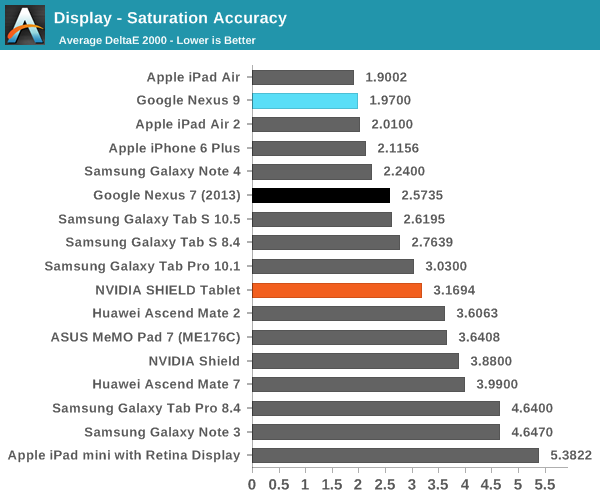
While grayscale is important, colors are really the hardest part to get right in a display. Here, the Nexus 9 does an amazing job in our saturation test. I really don’t have anything else to say here as pretty much everything is on the mark. At this point, it’s pretty clear that most Nexus devices have a strong focus on display quality, and the Nexus 9 is no exception.
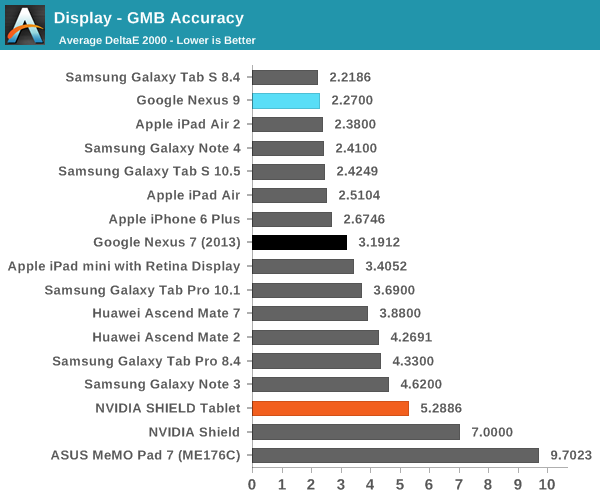
Finally, the Gretag MacBeth test shows that the Nexus 9 is quite accurate with color even outside of the basic primary and secondary colors. There shouldn’t be any issues with viewing content that has high requirements for color accuracy. Overall, the Nexus 9 display is great with only two real issues of note, namely the reflectance issue and the backlight bleed. While neither are deal-breakers, fixing these issues would make this display fall under a short list of the best mobile displays I’ve seen all year. For now, it sits just shy of that list. I definitely have to applaud Google in this case as they haven’t fallen into the trap of wider gamuts, bluer white points, dynamic contrast, and other “features” for the sake of showroom appeal.


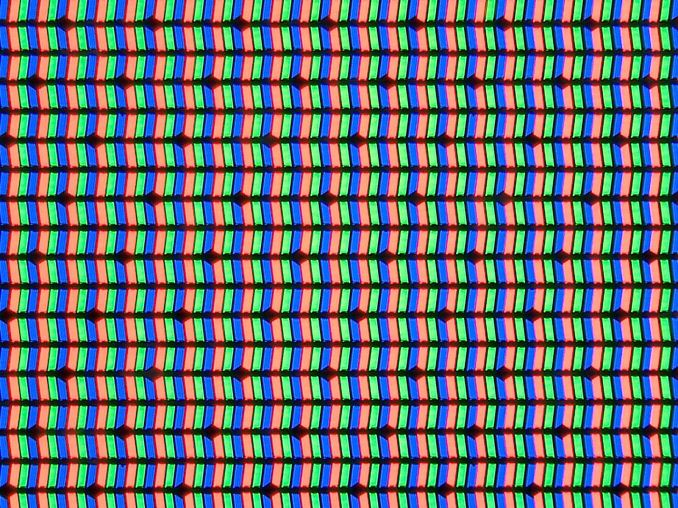

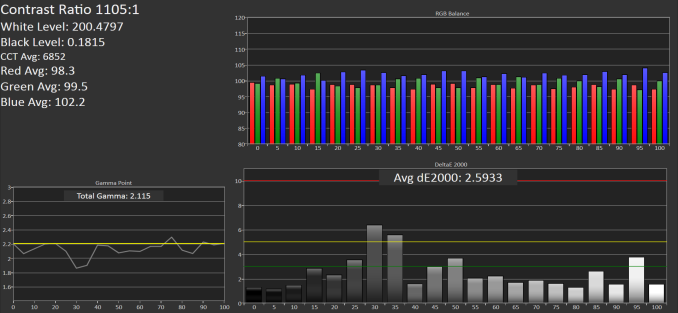
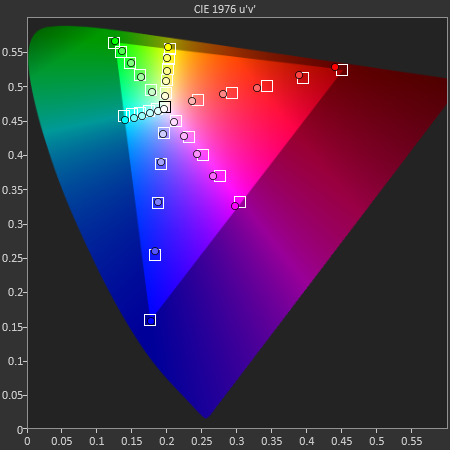
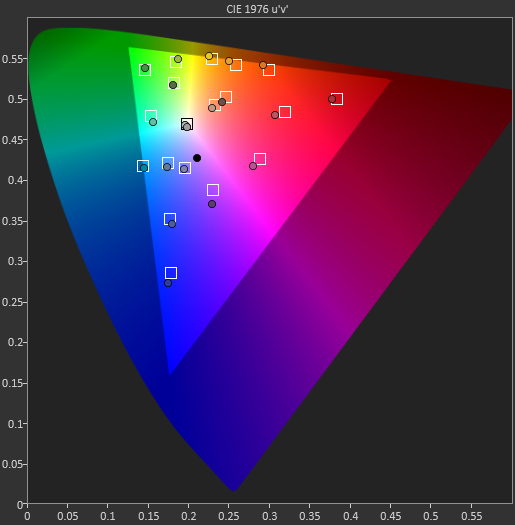








169 Comments
View All Comments
dtgoodwin - Wednesday, February 4, 2015 - link
I really appreciate the depth that this article has, however, I wonder if it would have been better to separate the in depth CPU analysis for a separate article. I will probably never remember to come back to the Nexus 9 review if I want to remember a specific detail about that CPU.nevertell - Wednesday, February 4, 2015 - link
Has nVidia exposed that they would provide a static version of the DCO so that app developers would be able to optimize their binaries at compile time ? Or do these optimizations rely on the program state when they are being executed ? From a pure academic point of view, it would be interesting to see the overhead introduced by the DCO when comparing previously optimized code without the DCO running and running the SoC as was intended.Impulses - Wednesday, February 4, 2015 - link
Nice in depth review as always, came a little late for me (I purchased one to gift it, which I ironically haven't done since the birthday is this month) but didn't really change much as far as my decision so it's all good...I think the last remark nails it, had the price point being just a little lower most of the minor QC issues wouldn't have been blown up...
I don't know if $300 for 16GB was feasible (pretty much the price point of the smaller Shield), but $350 certainly was and Amazon was selling it for that much all thru Nov-Dec which is bizarre since Google never discounted it themselves.
I think they should've just done a single $350-400 32GB SKU, saved themselves a lot of trouble and people would've applauded the move (and probably whined for a 64GB but you can't please everyone). Or a combo deal with the keyboard, which HTC was selling at 50% at one point anyway.
Impulses - Wednesday, February 4, 2015 - link
No keyboard review btw?JoshHo - Thursday, February 5, 2015 - link
We did not receive the keyboard folio for review.treecats - Wednesday, February 4, 2015 - link
Where is the comparison to NEXUS 10????Maybe because Nexus 10's battery life is crap after 1 year of use!!!
Please come back review it again when you used it for a year.
treecats - Wednesday, February 4, 2015 - link
My previously holds true for all the Nexus device line I own.I had Nexus 4,
currently have Nexus 5, and Nexus 10. All the Nexus devices I own have bad battery life after 1 year of use.
Google, fix the battery problem.
blzd - Friday, February 6, 2015 - link
That tells me you are mistreating your batteries. You think it's coincidence that it's happening to all your devices? Do you know how easy it is for batteries to degrade when over heating? Do you know every battery is rated for a certain number of charges only?Mostly you want to avoid heat, especially while charging. Gaming while charging? That's killing the battery. GPS navigation while charging? Again, degrading the battery.
Each time you discharge and charge the battery you are using one of it's charge cycles. So if you use the device a lot and charge it multiple times a day you will notice degradation after a year. This is not unique to Google devices.
grave00 - Sunday, February 8, 2015 - link
I don't think you have the latest info on how battery charging vs battery life works.hstewartanand - Wednesday, February 4, 2015 - link
Even though I personal have 6 tablets ( 2 iPads, 2 Windows 8.1 and 2 android ) and as developer I find them technically inferior to Actual PC - except for Windows 8.1 Surface Pro.I recently purchase an Lenovo y50 with i7 4700 - because I desired AVX 2 video processing. To me ARM based platforms will never replace PC devices for certain applications - like Video processing and 3d graphics work.
I am big fan of Nvidia GPU's but don't care much for ARM cpus - I do like the completion that it given to Intel to produce low power CPU's for this market
What I really like to see is a true technical bench mark that compare the true power of cpus from ARM and Intel and rank them. This includes using extended instructions like AVX 2 on Intel cpus.
Compared this with equivalent configured Nvidia GPU on Intel CPU - and I would say ARM has a very long way to go.
But a lot depends on what you doing with the device. I am currently typing this on a 4+ year old Macbook Air - because it easy to do it and convenient. My other Windows 8.1 ( Lenovo 2 Mix 8 - Intel Adam Baytrail ) has roughly the same speed - but Macbook AIR is more convenient. My primary tablet is the Apple Mini with Retina screen, it is also convent for email and amazon and small stuff.
The problem with some of bench marks - is that they maybe optimized for one platform more than another and dependent on OS components which may very between OS environments. So ideal the tests need to native compile for cpu / gpu combination and take advantage of hardware. I don't believe such a benchmark exists. Probably the best way to do this get developers interested in platforms to come up with contest for best score and have code open source - so no cheating. It would be interesting to see ranking of machines from tablets, phones, laptop and even high performance xeon machines. I also have an 8+ Year old dual Xeon 5160 Nvidia GTX 640 (best I can get on this old machine ) and I would bet it will blow away any of this ARM based tablets. Performance wise it a little less but close to my Lenovo y50 - if not doing VIDEO processing because of AVX 2 is such significant improvement.
In summary it really hard to compare performance of ARM vs Intel machines. But this review had some technical information that brought me back to my older days when writing assembly code on OS - PC-MOS/386